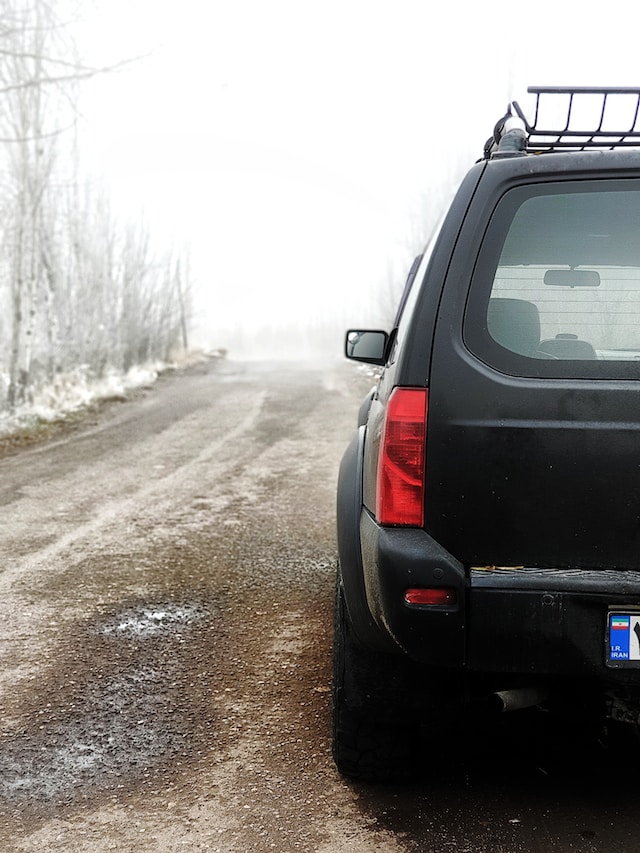
A Comprehensive Guide to Maintaining Your Nissan Xterra
Contents
- 1 Change oil and filter.
- 2 Inspect hoses and belts.
- 3 Check transmission fluid, engine coolant and brake fluid levels.
- 4 Inspect the tires for worn tread, damage, etc.
- 5 Inspect the battery for signs of corrosion, leaks or cracks.
- 6 Lube door hinges and locks to prevent sticking or rusting.
- 7 Replace your spark plugs every 100,000 miles or so.
- 8 Replace air filters and cabin filters every 30,000 miles or so to keep your Xterra running smoothly.
- 9 Have an inspection performed every two years by a reputable mechanic. This will let you know if there are any major issues that need to be addressed immediately or if there are just small things that can wait until the next time your car needs service (like replacing spark plugs).
- 10 Taking care of your vehicle is crucial to keeping it running smoothly
- 11 Conclusion
Your Nissan Xterra is an important part of your life. It’s how you get to work, it’s how you run errands, and it’s probably how you got to that amazing sandwich shop down the street. Your Xterra should be treated with care because the better shape it’s in, the longer it’ll last! Here are some tips for maintaining your Nissan so that its engine will continue running smoothly for years to come:
Change oil and filter.
Changing the oil and filter is a simple task that needs to be done regularly. The Xterra’s owner’s manual recommends changing your vehicle’s oil every 5,000 miles or at least once a year, whichever comes first. You should also replace the filter at this time so that you don’t have any contaminants in your engine.
The first thing you’ll want to do is locate where your vehicle stores its oil and filter–it may differ from model-to-model but it will usually be somewhere under or behind either side of the hood by one of your headlights (you can ask for help from an auto parts store employee if needed). Once you find where these items are located on your Nissan Xterra, remove them using an appropriate tool such as an adjustable wrench or socket set if necessary; then clean off any residue left behind by old fluids with paper towels before installing new ones into place using an appropriate torque wrench tool such as one meant specifically for tightening bolts like those found here: http://amzn/e/B01LX8W9S0/.
Inspect hoses and belts.
- Check hoses for cracks or leaks. Hoses should be replaced if they are cracked, torn or leaking fluid at any time.
- Check belts for cracks or fraying. Belts should be replaced if they have any visible damage, especially around the pulley where the belt runs over it every time you start your engine (this is called “pulley grooving”). You can also test your belts by pulling on them–if they’re loose enough to move around freely without being held in place by tensioners or other parts of the drivetrain system then they need replacing as well!
- Check belt tension: If you can’t see anything wrong with your belts but still suspect something might be amiss then try this simple test: With an assistant helping out there’s no need to jack up your Xterra on jack stands just yet; instead just lift up one corner slightly off its wheels so that only one wheel remains touching pavement while still allowing enough clearance beneath said corner so that no part touches pavement either (ideally about 2 inches). Then take one end of each respective belt between two fingers at opposite sides of its length dimensionally closest towards each other (so about halfway down) and pull down hard against gravity until released again–if there was any slack left after releasing then chances are good that could mean trouble brewing somewhere within those parts’ inner workings due whether because those lengths were too long originally when installed new back in 2002 when only single digit gas prices existed nationwide per gallon prices today make maintenance much more expensive than ever before across all industries including automotive ones!
Check transmission fluid, engine coolant and brake fluid levels.
- You should check the transmission fluid level every time you fill up at the gas station. If it’s low, add more; if it’s too high, drain some out. The same goes for the engine coolant (which keeps your engine from overheating) and brake fluids (used in conjunction with brakes). These fluids should be changed every two years or so depending on driving conditions.*
Inspect the tires for worn tread, damage, etc.
The tires are one of the most important parts of your car. They provide traction, which is essential for safe driving. If you have worn tires, it can be dangerous to drive on them and they may cause damage to other parts of your vehicle as well.
You should inspect your tires regularly for signs of wear or damage so that you know when it’s time to get new ones:
- Tire pressure: Check this at least once every month or two by using a tire gauge (which you can buy at any auto supply store). If the pressure is too high or low for the conditions where you live (for example if there’s been a lot of snow), it could cause problems with handling and safety features like ABS brakes
Inspect the battery for signs of corrosion, leaks or cracks.
- Check the terminals for corrosion and replace if necessary.
- Check the fluid levels in both cells and top off as needed with distilled water only (do not use tap water).
- Inspect the case for corrosion and clean away any buildup using baking soda mixed with a little water on a rag or soft cloth. Do not submerge your Nissan Xterra’s battery in any kind of liquid as this can cause damage! If you suspect there may be some internal damage to your Nissan Xterra’s battery, do not hesitate to bring it into our service center for an inspection by one of our highly trained technicians before proceeding further troubleshooting steps below:
Lube door hinges and locks to prevent sticking or rusting.
You can prevent your Xterra’s doors from sticking or rusting by applying a light oil (like WD-40) to the hinges and locks. To do this, simply spray the oil on, let it sit for a few minutes and then wipe off any excess with a towel.
If you have an older model Nissan Xterra that isn’t used often and has been sitting in storage for some time, it may be beneficial to apply this process every few months just so there aren’t any issues when you need to use your vehicle again.
Replace your spark plugs every 100,000 miles or so.
They’re an easy, inexpensive fix that can help improve the performance of your engine, but only if they’re properly maintained. Replacing spark plugs takes about an hour and requires only a few tools:
- A spark plug wrench (or socket wrench) that fits the size of your spark plugs
- A torque wrench for tightening down the new ones
All you have to do is remove the old ones from their sockets and insert new ones into place! Make sure not to over tighten them–you don’t want them breaking off inside the engine block! If you notice any cracks or signs of wear on any parts during this process, give us a call right away at 1-800-555-1234 so we can get everything fixed up before something goes wrong later down the road.”
Replace air filters and cabin filters every 30,000 miles or so to keep your Xterra running smoothly.
The air filter is actually part of the engine’s cooling system, so it’s important that you have a clean one in place at all times. If you drive in dusty conditions and feel like your Xterra isn’t getting enough airflow through its vents, then it may be time for an upgrade from a standard paper filter to something more durable like a foam model (which can be purchased at any auto parts store).
Cabin filters should also be replaced regularly–every 30k miles is recommended–and they’re relatively inexpensive compared with other maintenance items on this list ($15-$25). Cabin filters are designed specifically for removing dust particles from inside vehicles; if yours becomes dirty over time or doesn’t fit well into its housing after installation (you’ll know this because there’ll be gaps between its edges), then chances are good that another one needs replacing soon!
Have an inspection performed every two years by a reputable mechanic. This will let you know if there are any major issues that need to be addressed immediately or if there are just small things that can wait until the next time your car needs service (like replacing spark plugs).
Taking care of your vehicle is crucial to keeping it running smoothly
The most important thing to remember about taking care of your car is that it can save you money in the long run. If you neglect routine maintenance and let small issues become larger ones, you will end up spending more money on repairs than if you had just taken care of those little things from the beginning.
Routine maintenance is also crucial for avoiding breakdowns or accidents caused by poor vehicle condition. This can be especially important if you have an older model car or one with high mileage; these types of vehicles tend to wear out faster than newer models do because there are more moving parts inside them that need regular lubrication and cleaning (which we’ll discuss further below).
Conclusion
We hope this guide has been helpful in showing you how to maintain your Nissan Xterra. If you have any questions or concerns, please contact us at Luxury Auto Repair for a free quote on our services!








